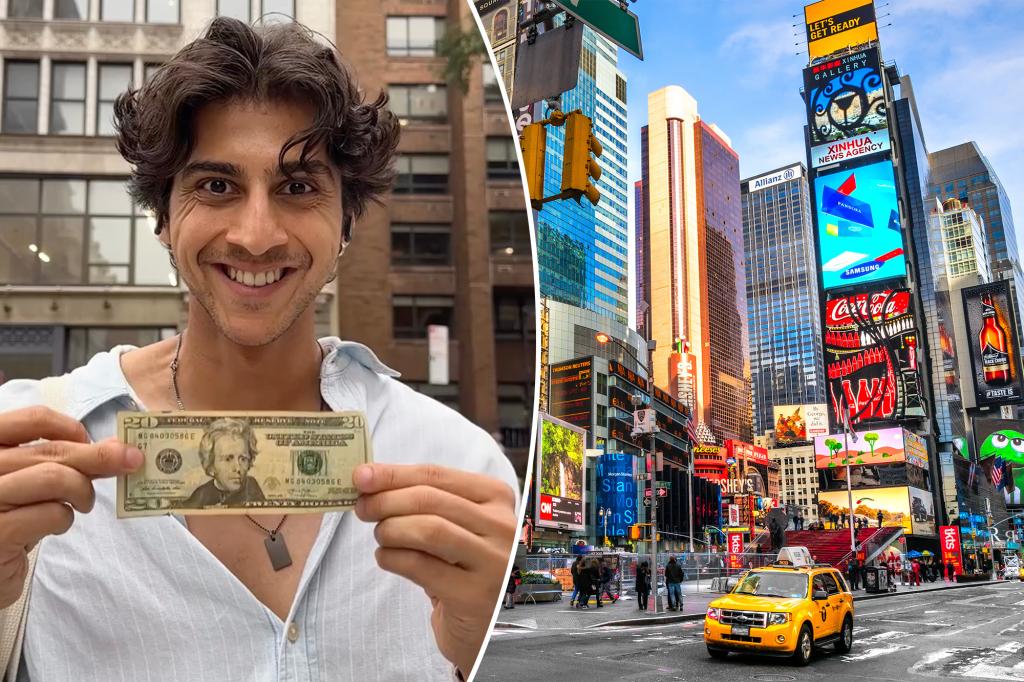Navigating New York on $20: A Food Influencer’s Clever Challenge
In a city where a cup of coffee can cost as much as a meal elsewhere, Indian food influencer Aabir Vyas took on an ambitious challenge: survive an entire day in New York City on just $20 for food. His viral Instagram video, titled “Barely Surviving with Aabir,” has sparked conversations about budget living in one of the world’s most expensive metropolises. What makes his journey particularly compelling isn’t just the tight budget, but his thoughtful approach to nourishment, energy management, and strategic spending throughout a typical New York day. Rather than merely subsisting on the cheapest options available, Vyas crafted a day that balanced nutrition, energy needs, and even small comforts—proving that with careful planning, one can navigate the Big Apple without breaking the bank.
The morning began with a pragmatic approach to breakfast that prioritized cost-effectiveness and energy over luxury. Five bananas for $1 provided quick carbohydrates and natural sugars for immediate energy, while a $3 bagel with eggs added some protein and sustaining fullness. “I’m trying to keep it relatively healthy. I know the protein is low, but the carbs give enough energy to get going,” Vyas explained in his video. This $4 breakfast might seem sparse to many New Yorkers accustomed to $15 avocado toasts or elaborate coffee shop fare, but it represented a strategic decision: front-loading the day with enough calories to remain productive while conserving most of his budget for later meals. The simplicity of his breakfast choice also reflected the reality that many working people face when balancing nutrition against cost—sometimes the perfectly balanced meal gives way to the perfectly affordable one.
Perhaps the most controversial aspect of Vyas’s day came during lunch, when he spent over $6 on coffee—nearly a third of his entire budget—alongside a $2.29 protein bar and a $0.48 sparkling water. This decision sparked debate among viewers, with many questioning why someone on such a tight budget would splurge on premium coffee when bodega alternatives exist for a fraction of the price. Yet Vyas’s explanation revealed thoughtful intentionality: “I needed a good coffee and a place where I could sit and work comfortably.” His choice wasn’t merely about caffeine; it was about purchasing temporary workspace access in a city where space comes at a premium. The protein bar, meanwhile, offered 20 grams of protein in a compact form, addressing nutritional needs while minimizing cost. This midday strategy highlighted how even within extreme budget constraints, allocating resources toward what personally brings value—whether energy, comfort, or productivity—remains essential to human wellbeing.
As evening approached, Vyas turned to one of New York’s most beloved budget institutions: the street food cart. His dinner choice—a hearty chicken and rice platter for under $7—demonstrated savvy local knowledge. Street food in New York often represents the intersection of value, portion size, and quality that budget-conscious residents rely upon. By forgoing extra sauces and add-ons, he managed to secure a protein-rich dinner that left him satisfied without exceeding his remaining budget. This final meal brought his daily total to $19.94, just six cents under his $20 limit—a remarkably precise execution of his financial plan. What wasn’t included in his calculations was transportation, as Vyas used a pre-paid subway card, highlighting how truly living on a strict budget requires advance planning and investment in cost-saving systems like weekly transit passes or meal preparation.
The social media response to Vyas’s experiment revealed much about our collective relationship with money, food, and perceived necessities. While many viewers applauded his resourcefulness and discipline, others critiqued specific choices: “You spent a third of your budget on coffee?” questioned one commenter, while others suggested alternative strategies that might have stretched his dollars further. These varied reactions underscore how personal financial decisions often become subject to public scrutiny, particularly when shared through social media. Yet the conversation Vyas sparked goes beyond simple budgeting tips to more fundamental questions about what constitutes necessity versus luxury in modern urban life, and how individuals prioritize different forms of nourishment—whether physical, mental, or emotional—when resources are limited.
What makes Vyas’s experiment particularly valuable isn’t just that he survived on $20—many New Yorkers with limited means do this daily out of necessity rather than choice—but that he approached the challenge with humanity and balance rather than mere deprivation. His day wasn’t about suffering or extreme frugality for its own sake; it was about demonstrating thoughtful resource allocation while maintaining dignity and some measure of enjoyment. In a culture that often glorifies either lavish consumption or ascetic minimalism, Vyas presented a middle path: mindful consumption based on personal values and practical needs. His viral challenge serves as a reminder that while New York City’s reputation for exorbitant prices is well-earned, creativity and intentionality can create space for financial accessibility even in the most expensive environments. For the millions of people navigating tight budgets in expensive cities worldwide, such practical demonstrations offer both solidarity and practical strategies for maintaining quality of life without financial strain.


